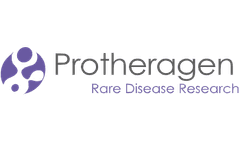Genetic Mutation Articles & Analysis
32 articles found
First, it enables researchers and clinicians to detect specific genetic alterations that may influence the behavior of the tumor. For instance, identifying mutations in genes such as ERBB2 (involved in cell growth and differentiation) through FISH can help determine appropriate targeted therapies for breast cancer patients. ...
Various factors contribute to this phenomenon, including genetic mutations, alterations in drug targets, enhanced drug efflux, and changes in metabolic pathways. ...
The most commonly used colorectal cancer cell lines include HCT116, SW480, and HT-29, each with distinct genetic and phenotypic characteristics. Applications in Research Colorectal cancer cell lines are instrumental in various research applications. ...
Knockin cell line generation represents a pivotal advancement in genetic engineering, providing vital tools for biological research and therapeutic development. ...
NGS provides an intricate map of genetic alterations, paving the way for a detailed characterization of edited genomes. ...
It involves the delivery of new genetic molecules into target cells to treat diseases. This technology has the implicit to revise the treatment of inherited genetic disorders, cancer and other intractable driseases. ...
AI-driven technologies have transformed the way we approach genetic modification and treatment, offering unprecedented opportunities for precision medicine and therapeutic interventions. ...
Applications: Disease Modeling: Investigating the impact of genetic mutations on cytoskeletal behavior in specific tissues. Drug Testing: Evaluating the effects of drugs on cytoskeletal integrity in a more relevant biological context. ...
Genomics: Whole-genome sequencing identifies genetic mutations and alterations driving tumor growth. This information is crucial for developing personalized therapies that target specific genetic abnormalities within the tumor. ...
In response to the emerging needs in global healthcare, SOPHiA GENETICS has just revealed the New Generation SOPHiA DDM™ Platform, aiming to stay at the forefront of precision medicine and address today the healthcare needs of tomorrow. ...
We guarantee three homozygous (or heterozygous) clones in which the modified line has the correct genetic mutation and three vials of each clone. Although we typically use HEK239T, Hela, HepG2, U87 for CRISPR-mediated gene editing, other cell lines are still available. We provide custom cell lines according to your requirements, our scientists have extensive ...
AI-driven technologies have transformed the way we approach genetic modification and treatment, offering unprecedented opportunities for precision medicine and therapeutic interventions. ...
CRISPR technology has revolutionized the field of genetics and molecular biology by enabling precise editing of the genome. ...
This therapeutic gene, once inside the cell, generates a functional protein to correct or counter the effects of the disease-causing genetic mutation, providing a basis for curing several genetic diseases. ...
This is where affinity maturation comes into play. Through a series of genetic mutations and selective pressures, the immune system fine-tunes the antibody structure, enhancing its ability to recognize and bind to the target with ever-increasing precision. ...
Researchers can induce and replicate specific rare diseases in animals by using genetic manipulation techniques, exposing them to various environmental factors, or incorporating specific gene mutations. ...
NGS provides an intricate map of genetic alterations, paving the way for a detailed characterization of edited genomes. ...
The factor that underpins the stability of these cell lines is the successful integration of this vector into the host cell's genome, laying the foundation for perpetual genetically stable cell generations. Thus, IESCLs serve as a potent research catalyst, augmenting our understanding and management of myriad pathologies and genetic disorders. ...
Chimeric RNA refers to a type of RNA molecule that is formed by the fusion of genetic material from two or more distinct genes. These chimeras can arise through different mechanisms, including chromosomal translocation, cis-splicing, or trans-splicing. ...
Rare diseases are a diverse group of disorders that affect a small percentage of the population, often occurring as a result of genetic mutations. With over 7,000 rare diseases identified worldwide, their rarity makes them particularly challenging to diagnose accurately. ...









